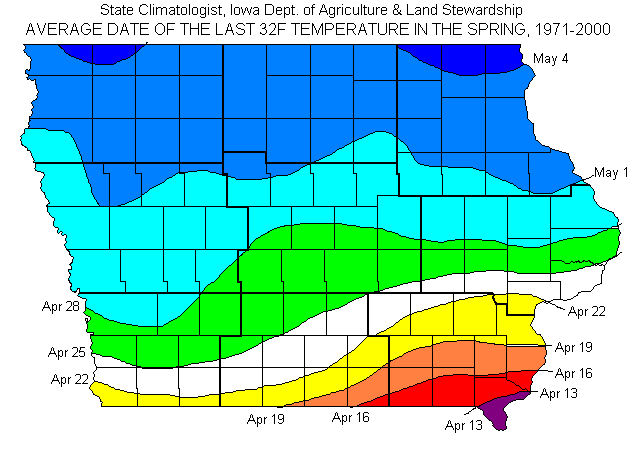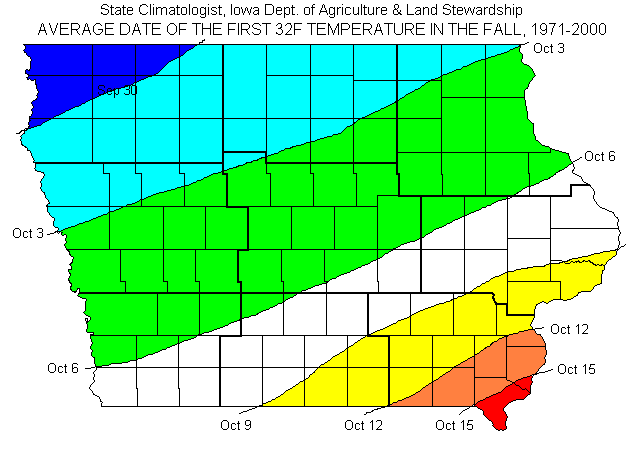Frost occurs when there is a solid deposition of water vapor from the air. Frost will form when solid surfaces are cooled below the dew point. An air temperature range of 33°- 36°, along with very light winds, is usually needed to initiate frost formation. At least minor damage is possible to plants. One must keep in mind that a frost is not guaranteed at these temperatures if moisture in the air is lacking and/or winds are roughly 8+ MPH.
The following list are some meteorological conditions that can lead to frost conditions:
Clear skies lead to radiational cooling, allowing the greatest amount of heat to exit into the atmosphere.
Cool temperatures, with some moisture, that promote ice crystal development. If the super-cooled, freezing temperatures can cool to the dew point (the temperature at which, when cooled to at constant pressure, condensation occurs; moisture will have to come out of the atmosphere as fog, frost, etc) frost could develop on exposed surfaces.
Calm to light winds prevent stirring of the atmosphere, which allows a thin layer of super-cooled temperatures to develop at the surface. These super-cooled temperatures can be up to 10 degrees cooler than 4-5 feet above the surface, where observations are typically taken. For example, if conditions are favorable, air temperatures could be 36 F, but the air in contact with the surface could be 30 degrees or colder.
Local topography has a large role in determining if and where frost develops. Cold air will settle in the valleys since it is heavier than warm air, therefore frost conditions are more prone in these regions. Valleys also shelter the area from stronger winds, enhancing the potential for frost.
A study done on frost formation relating temperature to dew point has these guidelines for frost: temperatures from 38 to 42 F can lead to patchy frost, 33 to 37 areas of frost, and 32 and below widespread frost/freeze. Note that the study did not factor in other considerations to frost, such as sky cover and wind speeds.
Other local effects, such as soil moisture/temperature, proximity to large bodies of water, and stage of vegetation "greenness" are factors that can affect the possibility of frost forming.
Freeze occurs when the air temperature drops to 32° or lower. A freeze will result in significant damage to many unprotected plants, especially if the temperature remains at-or-below freezing for several hours.
Hard freeze occurs when the temperature reaches 28°-or-lower for at least a few hours. It usually means that many types of plants and most seasonal vegetation will be destroyed.

